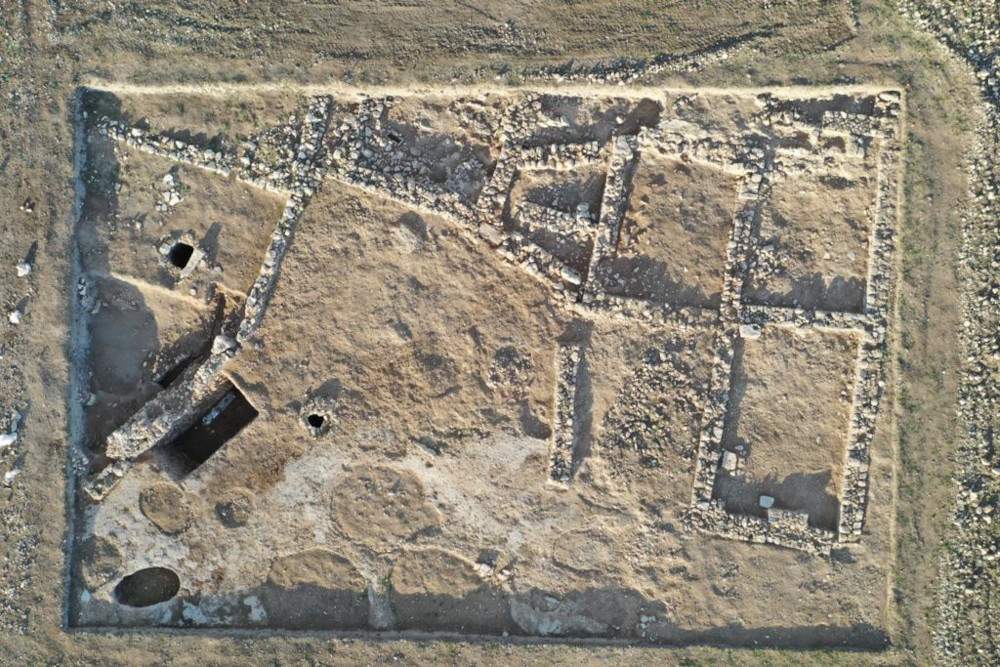From Siponto excavations unearthed part of Roman amphitheater
During the second excavation campaign at Siponto (Manfredonia) conducted by the Universities of Bari and Foggia, under the direction of professors Roberto Goffredo, Maria Turchiano (Unifg) and Giuliano Volpe (Uniba), under a concession from the Ministry of Culture, in collaboration with the Soprintendenza Archeologia, belle arti e paesaggio for the provinces of Barletta, Andria, Trani and Foggia (superintendent Anita Guarnieri, officer in charge Donatella Pian), the Puglia Regional Museums Directorate (director Luca Mercuri, Archaeological Park director Francesco Longobardi), important new findings emerged.
In particular, in addition to numerous medieval-era buildings, houses, warehouses, grain pits, burials, identified mainly in the neighborhood near the port, among which emerges an imposing medieval building probably dating back to the years of Frederick II, in the heart of the city, where a large medieval domus, articulated in various rooms and equipped with a well, was investigated, part of an amphitheater of the Roman age was found. Built in theage of Augustus, the performance building was presumably abandoned in the Late Antique period (5th-6th centuries), due to the spread of Christianity, and more importantly became a kind of quarry to recover building materials in the medieval age. Above the amphitheater developed part of the medieval city and a cemetery.
The presence of the amphitheater had been known for centuries, partly because the structures had been partly reused in a modern farmhouse, and further confirmation came from aerial and geophysical surveys: now, however, the excavation has provided clear material evidence. In fact, recent excavations have been able to ascertain, in two different places, the preservation of the perimeter wall, made of a reticulated work, up to almost three meters in height. The state of preservation of the monument is significant at least in the lower part of the boundary wall and, likely, also in the lower part of the cavea and arena.
The amphitheater, placed as usual in the periphery, almost close to the walls, for reasons of public order and also to facilitate the access of those who came from the countryside or nearby settlements to watch gladiatorial games, had considerable dimensions (about 78 meters long and 68 meters wide) and could accommodate about 8 thousand spectators.
Future excavations may allow for the gradual exposure of the entire building, which could be an essential part of the archaeological park, along with the early Christian basilica, the medieval quarters, the port area, and the various still-buried buildings that future archaeological research may investigate.
“Beyond the specific and well-known archaeological values of the Siponto site,” commented Superintendent Anita Guarnieri, “the experience of collaboration between the ABAP BAT and FG Superintendency, the Regional Museums Directorate and the two Universities involved is a witness to the synergistic relationship that has been initiated between the various Institutes for some time. In considering that scientific research always stands as the instrument of knowledge and awareness of one’s own identity, it is hoped that the whole area and the archaeological materials found can soon be valorized thanks to the elaboration of an organic project also in the face of further future joint work activities.”
“The transversal collaboration between the Ministry and the University, a prerequisite for enabling through constant dialogue, a lively and constructive scientific debate, is bearing excellent fruit,” comments Director Luca Mercuri. “This valuable reconnection between research and protection is increasing knowledge that will be fundamental for the ongoing enhancement activities at Siponto, but also in view of the expansion of the Park’s visiting areas. I thank Superintendent Guarnieri and Professors Volpe, Turchiano and Goffredo for this shared path, conceived in a logic of collaboration and developed in a systemic perspective.”
 |
| From Siponto excavations unearthed part of Roman amphitheater |
Warning: the translation into English of the original Italian article was created using automatic tools. We undertake to review all articles, but we do not guarantee the total absence of inaccuracies in the translation due to the program. You can find the original by clicking on the ITA button. If you find any mistake,please contact us.




























